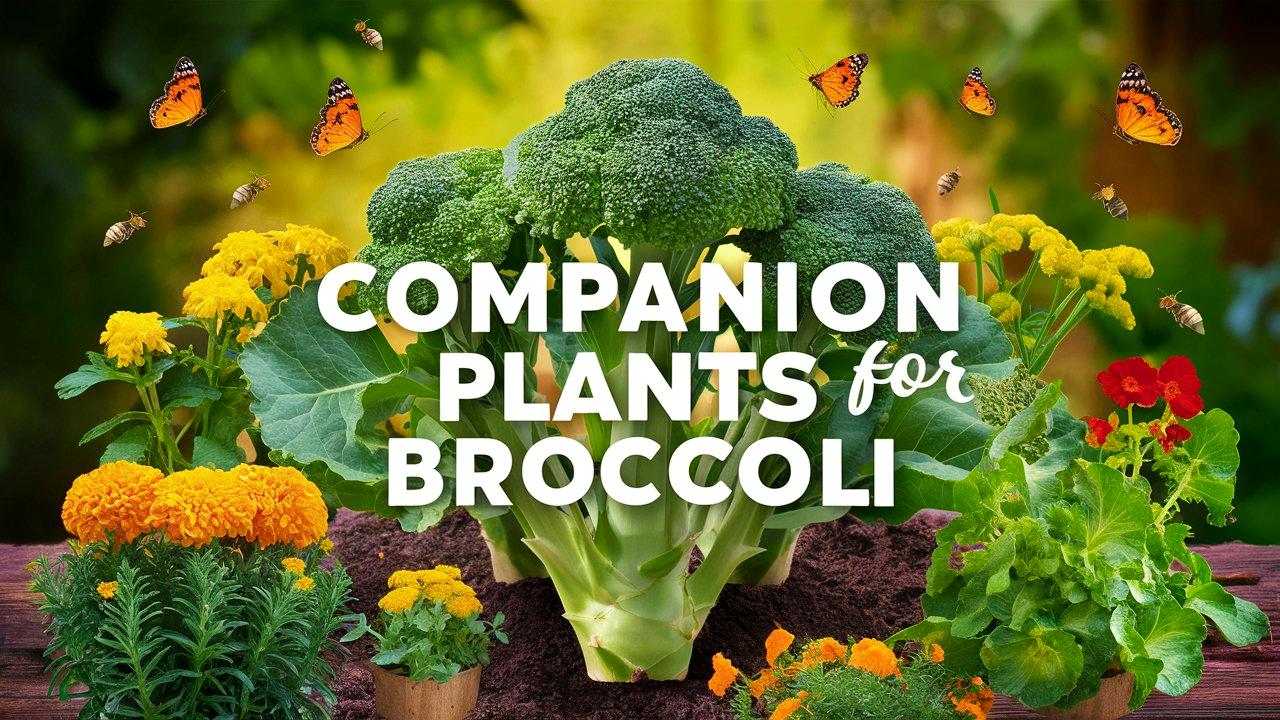Companion planting serves as a holistic approach to gardening that maximizes the health and yield of crops. For broccoli growers, understanding the intricate relationships among plants can lead to a flourishing garden, encouraging beneficial interactions while mitigating challenges. Now, let’s explore specific plants in detail.
Companion Plants to Deter Pests
Basil
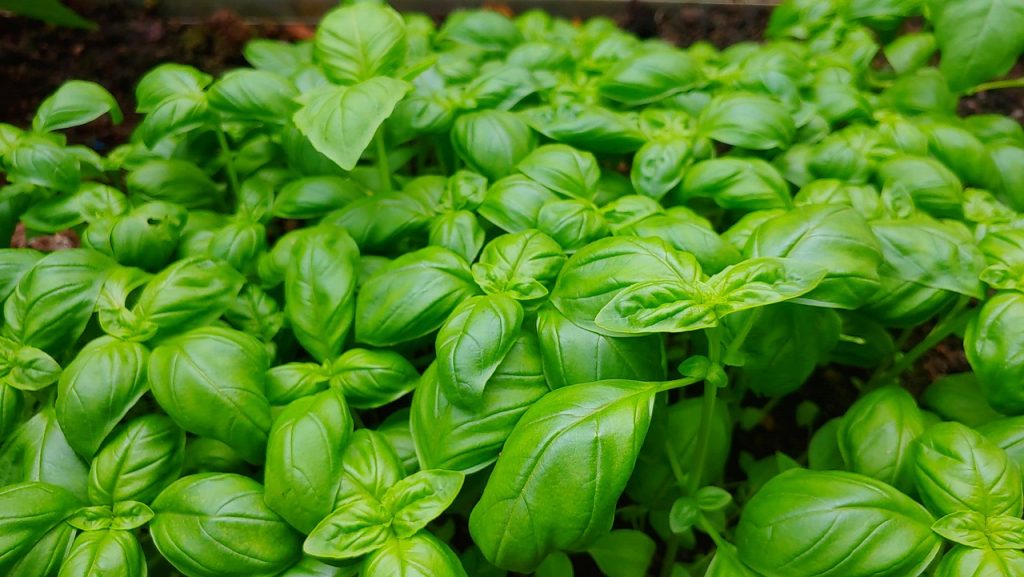
Basil (Ocimum basilicum) is a delightful herb that not only adds flavor to culinary dishes but is also known for its pest-repellent properties. The essential oils in basil produce strong scents that deter aphids and spider mites, common pests that target broccoli plants. Additionally, basil attracts beneficial insects like ladybugs and bees, aiding in pollination and biological pest control. Planting basil near broccoli may stimulate growth, as it can help the broccoli plants become more aromatic and flavorful due to the close proximity. Basil thrives in well-drained soil and direct sunlight, making it adaptable to various garden conditions. It is essential to harvest basil regularly to encourage bushy growth and prolong its productivity throughout the season.
Chives
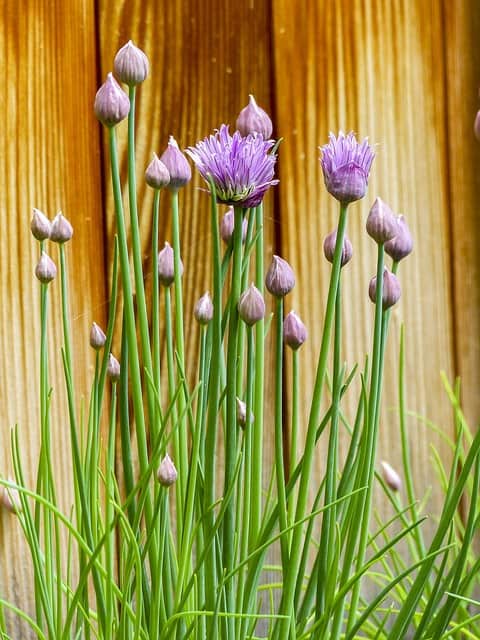
Chives (Allium schoenoprasum), members of the onion family, are an excellent companion plant for broccoli. Their strong oniony aroma is effective in deterring aphids, cabbage worms, and various beetles that may target your broccoli plants. Furthermore, chives are low-maintenance and thrive in similar soil conditions as broccoli. Their flowering tops attract pollinators, enhancing overall garden health. Beyond pest control, chives can also complement the flavor of broccoli when used in cooking. Like basil, they prefer full sunlight and well-drained soil, and regular harvesting of the leaves encourages continuous growth.
Dill
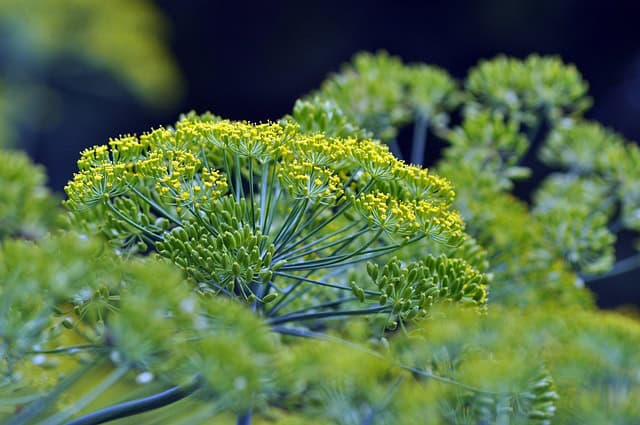
Dill (Anethum graveolens) is a feathery herb that attracts helpful predatory insects, like hoverflies and parasitic wasps, which feast on aphids and caterpillars threatening broccoli crops. The scent of dill can also deter harmful insects that might otherwise attack broccoli. Additionally, dill’s deep taproot can help break up soil, promoting better drainage and nutrient uptake for nearby plants. By growing dill alongside broccoli, gardeners can create a more biodiverse environment that actively supports beneficial wildlife. Be mindful when planting dill as it can reach considerable heights, potentially blocking sunlight for smaller crops, so proper spacing is necessary.
Mint
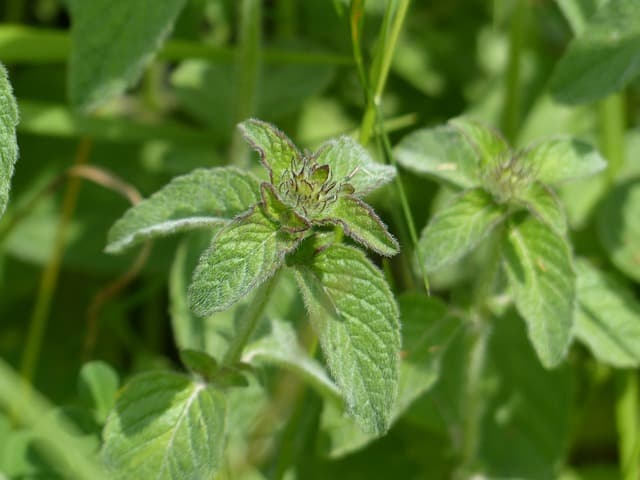
Mint (Mentha spp.) is a robust aromatic herb recognized for its vigorous growth and ability to repel pests like cabbage moths and aphids. Its high sugar content makes it less appealing to pests that might otherwise harm broccoli plants. However, mint can quickly become invasive, so it is best to plant it in containers or create barriers to contain its spread. Beyond pest management, mint enhances the sensory experience of the garden with its refreshing fragrance. It prefers well-drained soil and partial shade, making it adaptable to a variety of garden setups. Regular harvesting will keep the plant bushy while encouraging it to emit a more pronounced aroma, supporting its pest-repelling qualities.
Oregano

Oregano (Origanum vulgare) is a robust herb that functions synergistically with broccoli by warding off pests like cabbage moths and whiteflies. Its potent aroma acts as a natural repellent, making it less appealing to pests that might threaten broccoli. Oregano also attracts pollinators, which further enhances the health of your garden. Its drought-resistant nature means it doesn’t require overly fertile soil, making it an excellent companion that thrives in various conditions. Regular cutting of oregano encourages bushy growth, which can contribute to maintaining a diverse ecosystem in your garden while providing flavorful additions to culinary dishes.
Rosemary

Rosemary (Salvia rosmarinus) is a versatile herb that makes for an excellent companion plant for broccoli. Its strong scent repels pests such as cabbage moths and aphids, which are known to inflict damage on broccoli plants. Growing rosemary near broccoli not only helps in pest deterrence but also provides an attractive addition with its evergreen foliage and lovely flowers. Rosemary prefers well-drained soil and a sunny location, making it a great choice for a mixed garden or herb bed. Remember to harvest rosemary regularly, as this promotes new growth and maintains the size of the plant, allowing it to coexist comfortably with broccoli.
Sage
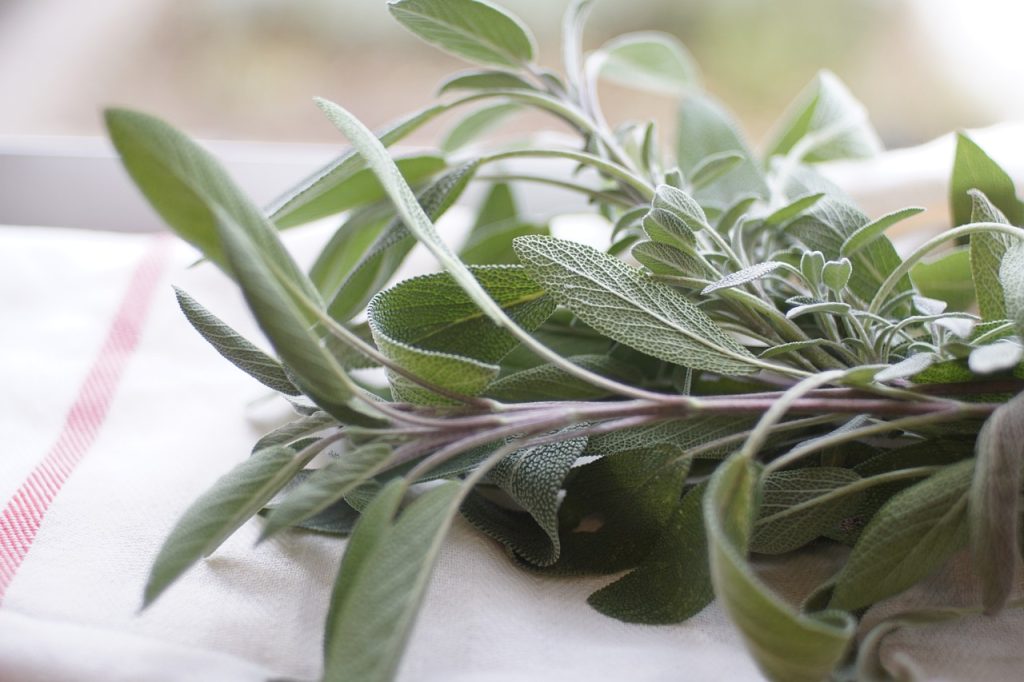
Sage (Salvia officinalis) is another aromatic herb that works well as a companion plant for broccoli. Like rosemary, sage helps to repel pests, particularly cabbage moths, which can be problematic for broccoli growers. Its strong scent serves to mask the aroma of broccoli, making it less detectable to these pests. Sage also improves the flavor of vegetables grown in proximity. This perennial herb thrives in well-drained soil and sunny areas, requiring minimal care once established. Harvesting sage leaves regularly encourages bushier growth and can deter pests and attract beneficial insects to your garden.
Thyme

Thyme (Thymus vulgaris) is a hardy herb that not only acts as a pest repellent for aphids and whiteflies but also serves numerous culinary uses. When planted alongside broccoli, thyme’s growth habit can create a living mulch effect, suppressing weeds and retaining soil moisture. This reduces competition for resources while providing protection and nutrients for broccoli. Thyme flourishes in well-drained soil and full sunlight, making it an easy addition to any garden. Regular harvesting of thyme encourages healthy new growth, benefiting both the plant and nearby broccoli.
Companion Plants for Saving Space
When you’re limited on space, certain plants can be strategically chosen to maximize growing potential while ensuring compatibility.
Beets
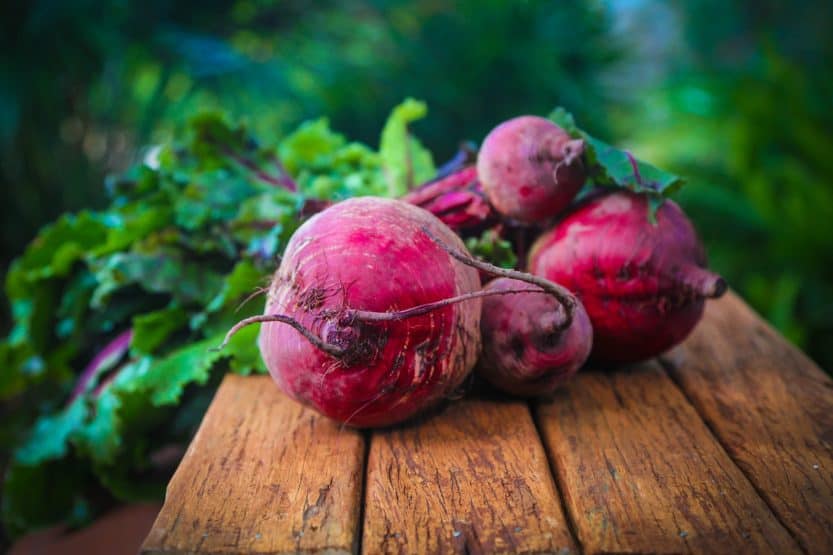
Beets (Beta vulgaris) are versatile root vegetables that can be grown alongside broccoli without competing too heavily for nutrients. Their deep-growing taproots allow them access to deeper soil layers, while broccoli’s shallower roots draw from the upper layers. This complementary root structure optimizes space without straining available nutrients. Additionally, beets can be harvested at various stages, providing a continuous yield without interrupting the growth of neighboring broccoli. Beets prefer nutrient-rich, well-drained soil, and they thrive in cooler temperatures, making them an ideal companion for broccoli in the early spring or fall.
Cucumbers
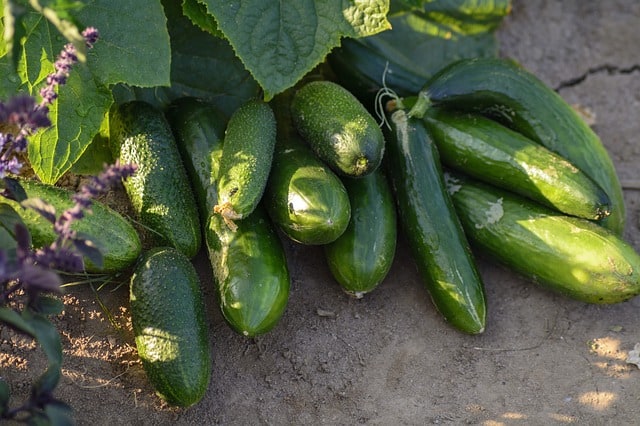
Cucumbers (Cucumis sativus) thrive under similar conditions to broccoli, requiring warm temperatures and well-drained soil. Their sprawling growth habit can provide partial shade for broccoli, especially during hotter months, which can help preserve moisture and alleviate stress on broccoli plants. Cucumbers grow quickly and can be harvested at different times, providing a staggered yield that does not heavily interfere with broccoli’s growth. When planted vertically, cucumbers can also save garden space while improving air circulation around broccoli plants, reducing the risk of fungal diseases.
Garlic
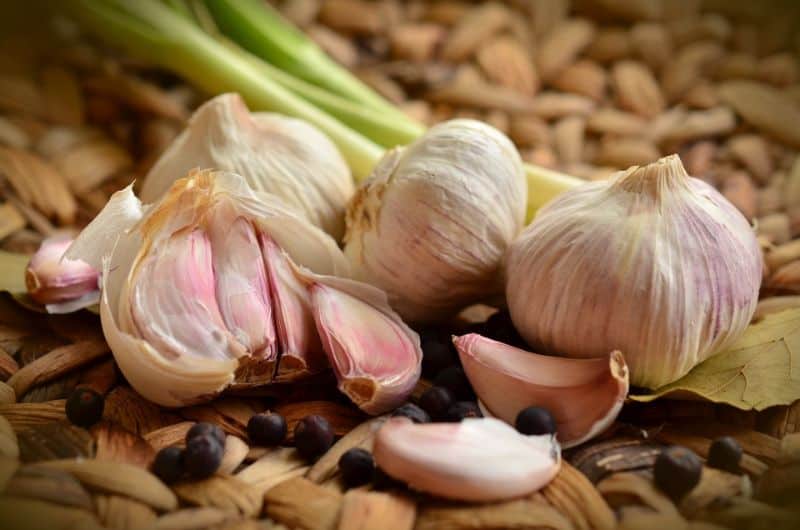
Garlic (Allium sativum) is renowned for its pest-repelling abilities, particularly against aphids and spider mites. Its strong aroma keeps undesirable pests at bay while promoting growth for companion plants, including broccoli. Garlic is planted in the fall as cloves and harvested in early summer, making it an excellent intercropping choice for late-spring-planted broccoli. Pairing these two plants is mutually beneficial, as garlic draws on different nutrient sources than broccoli. Both plants thrive in rich, well-drained soil and require similar amounts of sunlight.
Lettuce
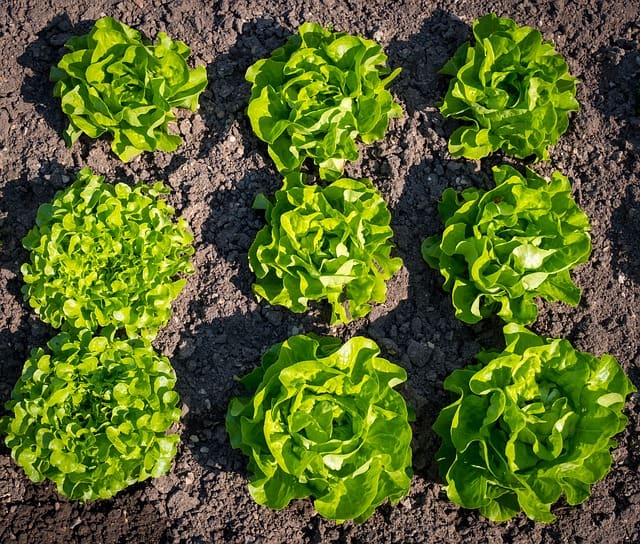
Lettuce (Lactuca sativa) is a fast-growing crop that can be interplanted with broccoli. By utilizing the space between broccoli plants, lettuce can be harvested before broccoli fully matures. This timing reduces competition for nutrients and light, allowing both crops to thrive. Lettuce prefers cooler temperatures, making it an ideal option for spring planting alongside broccoli. Its shallow roots create minimal disruption in the soil compared to deeper-rooted crops, ensuring that both plants can grow harmoniously.
Onions
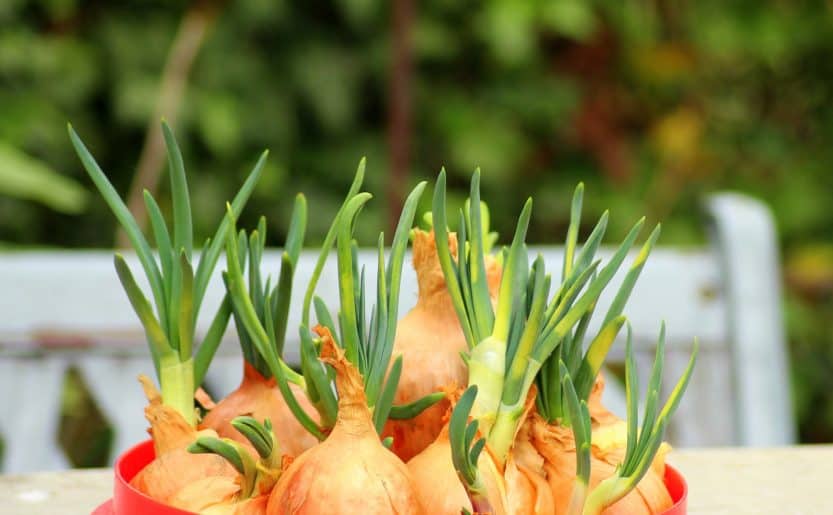
Onions (Allium cepa) work well as companions for broccoli due to their pest-repelling properties, especially against aphids. The strong scent of onions can confuse pests and is an asset in protecting neighboring crops from infestations. Onions have a relatively shallow root system, which allows them to grow alongside broccoli without competing heavily for essential nutrients. However, gardeners should space out onions and broccoli to ensure that both plants receive adequate light and airflow, promoting healthy growth for both.
Radishes
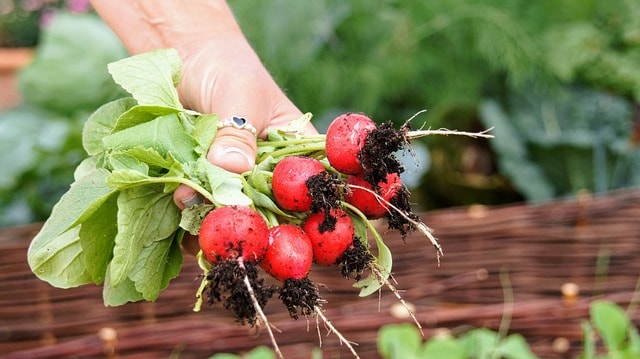
Radishes (Raphanus sativus) are fast-growing and can fill space between broccoli plants effectively. They mature quickly and can be harvested before broccoli reaches full size, making them ideal for maximizing limited garden space. Their deep roots can help break up compacted soil, promoting better drainage and aeration, which benefits the neighboring broccoli. Additionally, radishes can serve as trap crops, drawing pests away from broccoli. It is important to select quick-maturing varieties, such as cherry belle or French breakfast radishes, to reap the rewards in a timely manner.
Spinach
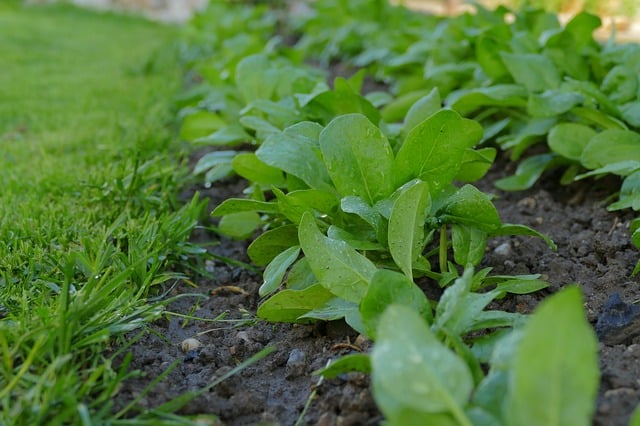
Spinach (Spinacia oleracea) is a nutrient-dense leafy green that pairs well with broccoli. Its shallow root system allows both plants to coexist without significant competition for nutrients. Planting spinach alongside broccoli can bring mutual benefits, as spinach can provide some shade to younger broccoli, protecting it from heat stress. The two crops can be staggered in planting times, permitting healthy rotations and maximizing available garden space. Spinach grows relatively quickly and can be harvested multiple times, ensuring continuous yields throughout the growing season.
Shallots
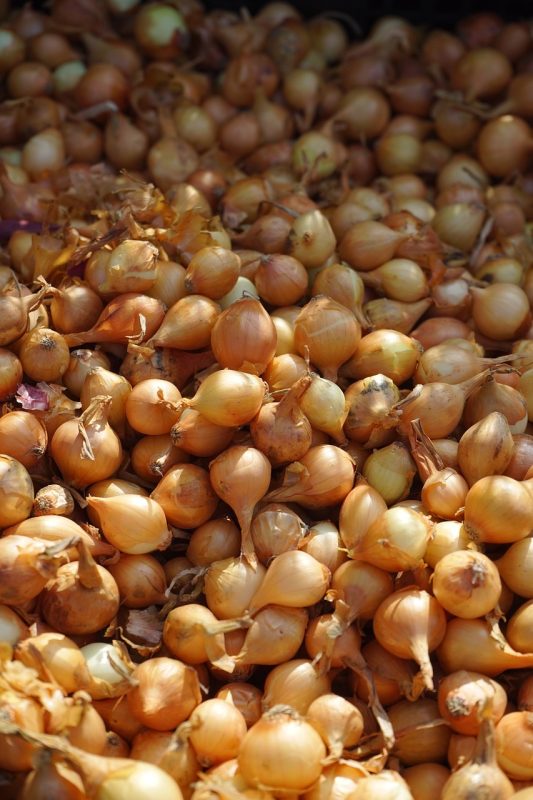
Shallots (Allium ascalonicum) offer similar benefits to onions, providing an effective pest barrier for broccoli while requiring minimal space. Their growth habit is suitable for interplanting, allowing both shallots and broccoli to develop without overwhelming one another. Shallots also prefer similar growing conditions, including sandy, well-drained soil and ample sunlight. Like garlic, they are planted in the fall, which means that as shallots are being harvested in the summer, broccoli plants will be reaching maturity, allowing for efficiency and crop rotation.
Swiss Chard
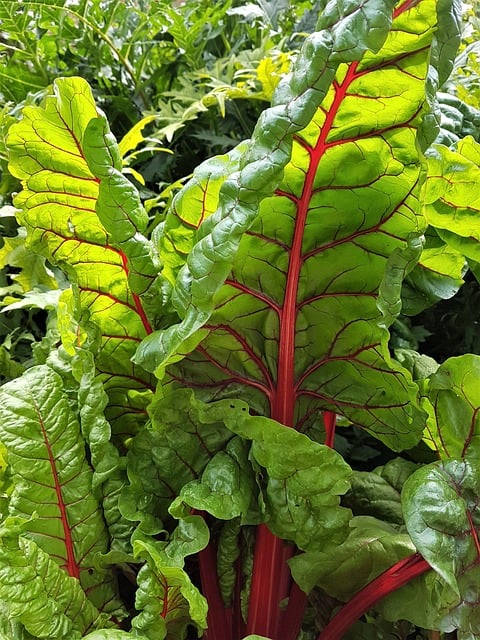
Swiss chard (Beta vulgaris subsp. cicla) is not only visually appealing with its colorful stems but also an excellent companion for broccoli. Swiss chard can thrive in various soil types and has a less competitive root system that allows for harmonious growth alongside broccoli. The robust foliage of Swiss chard can create some shade for younger broccoli, assisting in moisture retention and temperature regulation. Harvesting outer leaves of Swiss chard can allow for continuous growth while simultaneously giving room for broccoli to flourish. Both crops can be planted in a staggered manner to maximize available space throughout the growing season.
Worst Broccoli Companion Plants
While many plants work harmoniously with broccoli, some can hinder its growth, create competition for resources, or attract detrimental pests.
Tomatoes
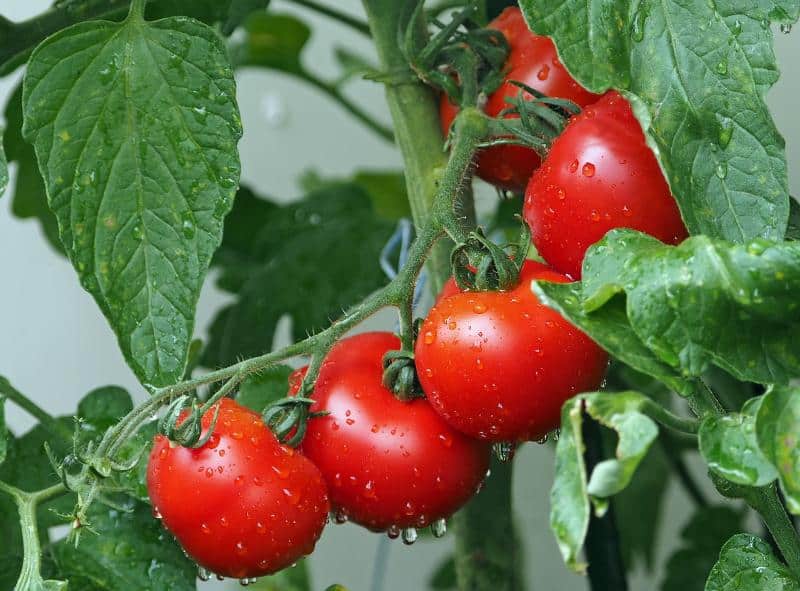
Tomatoes (Solanum lycopersicum) are heavy feeders that demand considerable nutrients, which can lead to competition with broccoli for essential soil resources. Their varied nutrient needs can negatively affect the growth of broccoli, leading to stunted plant development. Moreover, tomatoes are susceptible to similar pests, including aphids and whiteflies, which could increase infestation risks for broccoli. Keeping tomatoes and broccoli apart in the garden can provide a more balanced growing environment conducive to both crops.
Eggplant
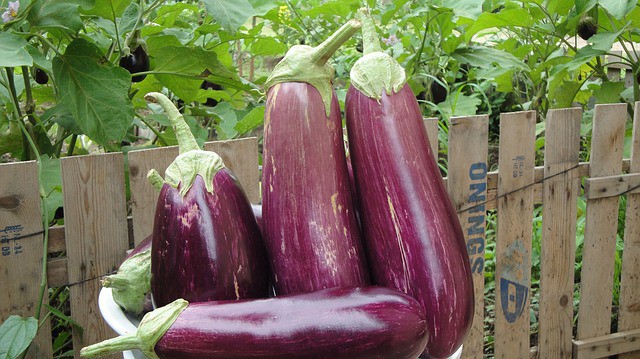
Eggplant (Solanum melongena), like tomatoes, shares the heavy feeder characteristic, which creates an imbalance when grown alongside broccoli. The competition for nutrients and water may stress both crops, leading to reduced yields and a higher susceptibility to disease. Additionally, eggplant can draw similar pests to the area, which poses a further threat to broccoli plants. For optimal outcomes, it is advisable to plant these crops separately to ensure ample resources for each.
Lima Beans
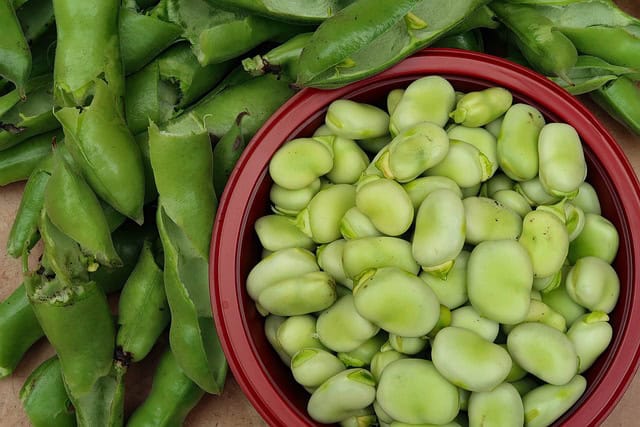
Lima beans (Phaseolus lunatus) have different nutrient requirements compared to broccoli, leading to potential competition for water and soil fertility. Additionally, they can attract pests that target broccoli, causing problems for overall crop health. By planting lima beans further away from broccoli, gardeners can mitigate this competition and protect the health of both crop varieties.
Peppers
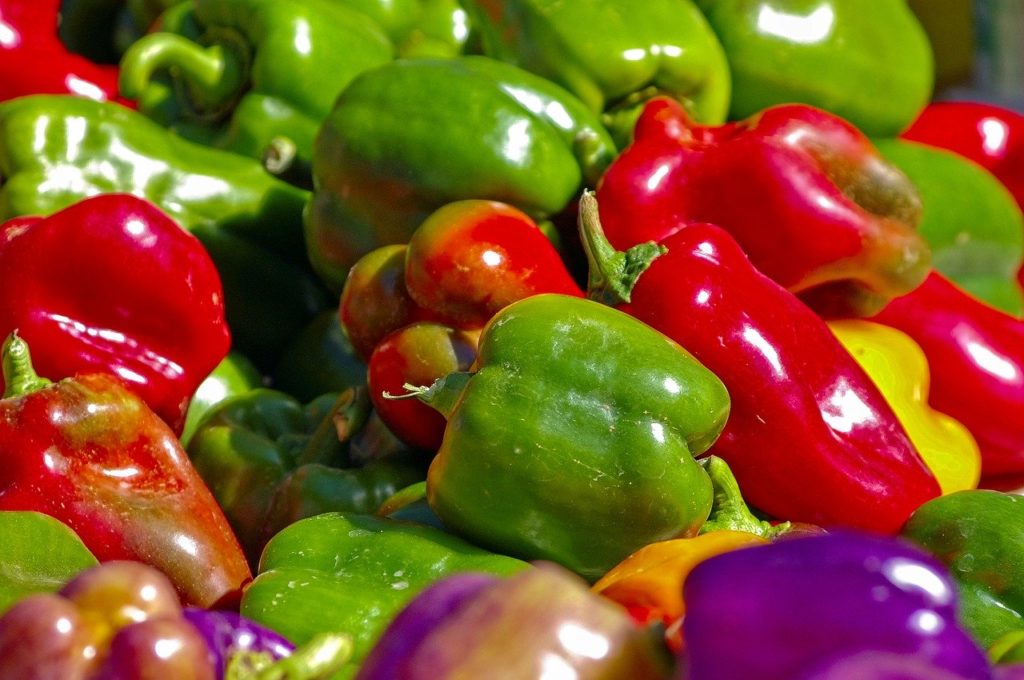
Like other nightshades, peppers (Capsicum spp.) compete heavily with broccoli for nutrients and space. These two crops may struggle to thrive in close proximity, leading to diminished yields. In addition, peppers may attract pests such as aphids and various beetles that can harm broccoli. Keeping peppers and broccoli at a distance will promote better growth and healthier plants.
Pole Beans
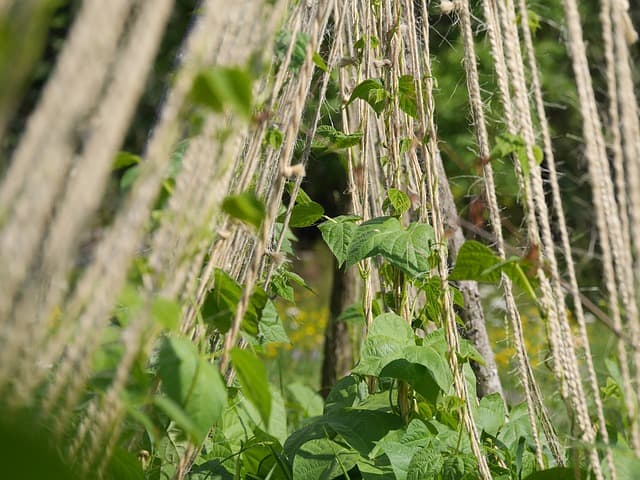
Pole beans (Phaseolus vulgaris) can efficiently shade out broccoli plants, creating an imbalance in the garden. Their extensive climbing habit can hinder the growth of nearby broccoli by blocking sunlight and air circulation, essential for healthy plant development. Furthermore, pole beans require significant nutrients, leading to competition that may compromise crop vigor. It’s best to plant these crops in separate areas of the garden.
Snap Beans
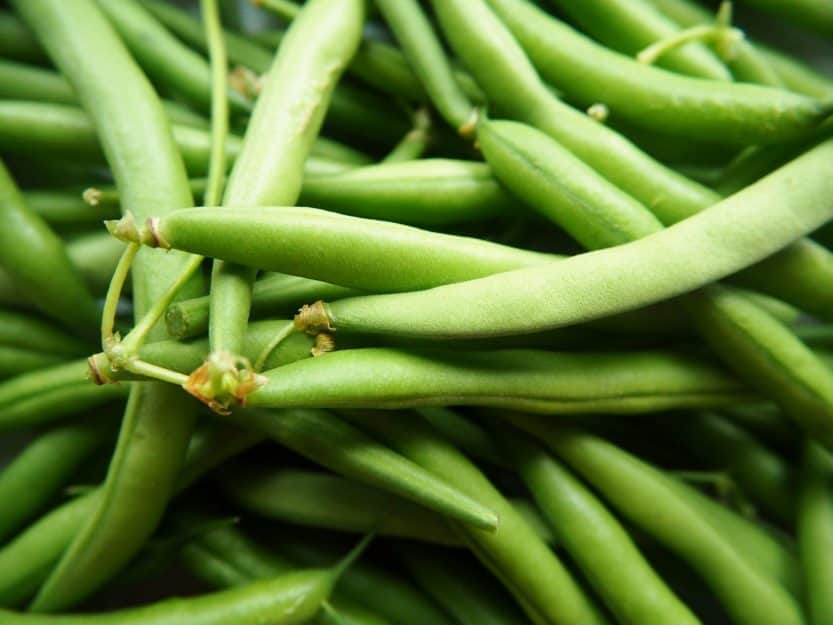
Similar to pole beans, snap beans are also aggressive growers that can overshadow shorter crops like broccoli. Their dense foliage can block light, stunting broccoli growth, and leading to lower yields. Additionally, snap beans can attract pests that pose a threat to broccoli when planted closely together. Maintaining appropriate distance and spacing in the garden can help both crop types flourish without interference.
Squash
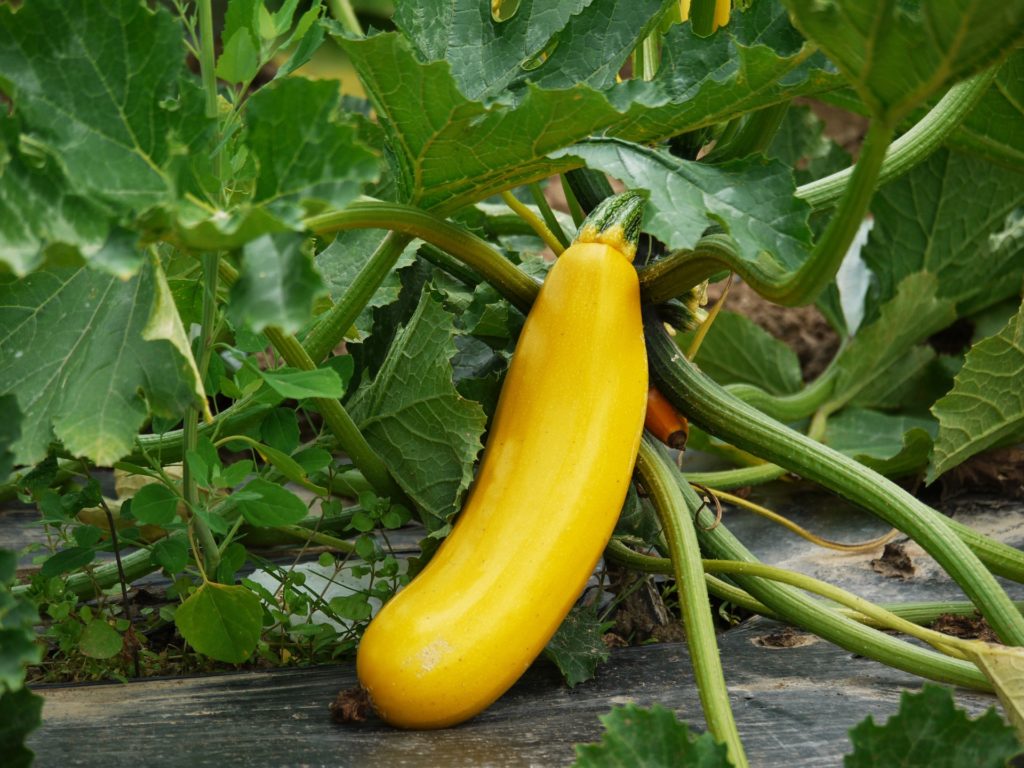
Squash (Cucurbita spp.) is a sprawling plant that can quickly overrun garden space. Its aggressive growth pattern can compete with broccoli for nutrients and moisture, leading to suboptimal growth for both. Squash can also attract pests that can spread among other crops, increasing the chances of disease. As with other garden bedmates, it is wise to plant squash separately from broccoli to ensure each species has adequate access to resources.
Strawberries
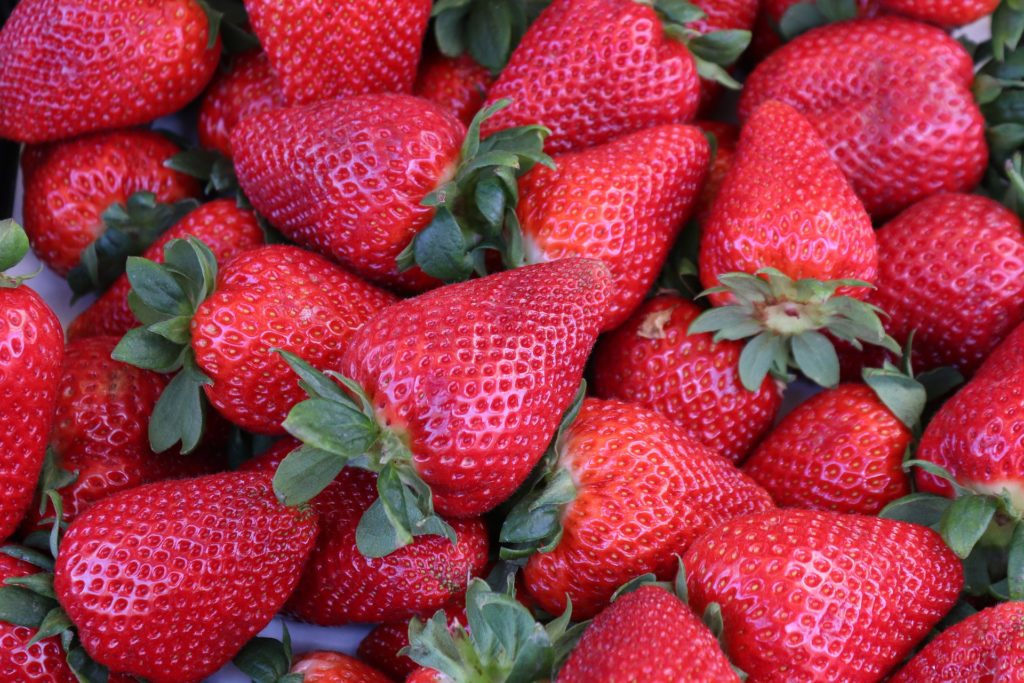
Strawberries (Fragaria × ananassa) thrive in similar growing conditions as broccoli but can pose challenges to its growth. Their root systems can compete for nutrients and water, potentially starving broccoli of essential resources. This competition can lead to underdeveloped crops and lower yields. Additionally, strawberries can attract pests, such as slugs, that can also harm broccoli plants. To mitigate these risks, it is best to plant strawberries away from broccoli in the garden.
Heavy Feeders
Heavy feeders require substantial amounts of nutrients, which can create competition for soil resources in a mixed garden.
Asparagus
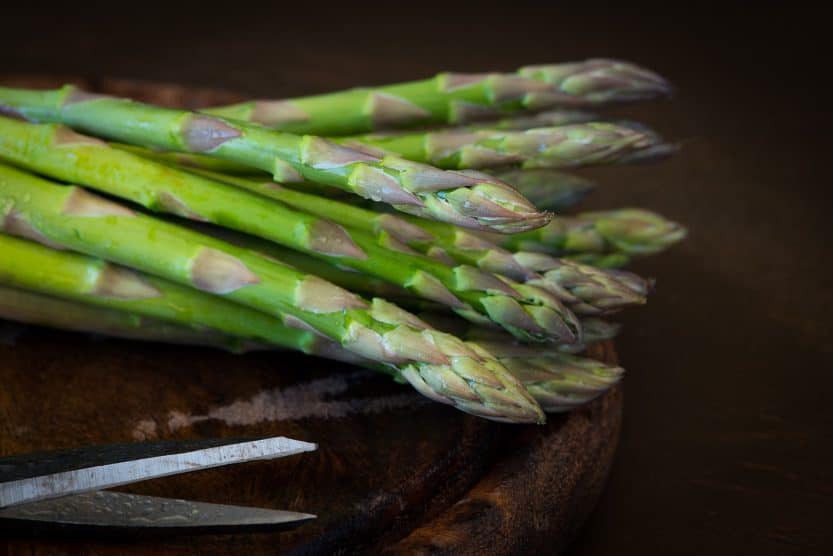
Asparagus (Asparagus officinalis) is a perennial vegetable that demands high soil fertility and nutrients throughout its growing season. This competitive nature regarding nutrient uptake can hinder broccoli’s growth and result in diminished yields for both plants. If planting asparagus in the same bed, make sure to provide ample nutrients to both crops, or consider planting them in separate areas to alleviate competition.
Cantaloupe
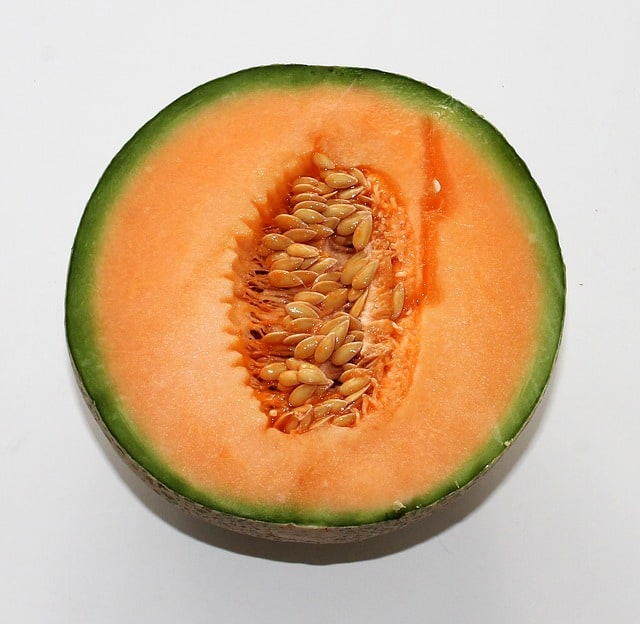 Cantaloupe (Cucumis melo) grows vigorously and demands a lot of nutrients from the soil. This heavy feeder can overshadow nearby broccoli plants, leading to competition for light and nutrients. Additionally, their sprawling vines may create shading or choking effects around broccoli plants. For optimal growth, it’s prudent to maintain distance between cantaloupe and broccoli to allow both crops to flourish.
Cantaloupe (Cucumis melo) grows vigorously and demands a lot of nutrients from the soil. This heavy feeder can overshadow nearby broccoli plants, leading to competition for light and nutrients. Additionally, their sprawling vines may create shading or choking effects around broccoli plants. For optimal growth, it’s prudent to maintain distance between cantaloupe and broccoli to allow both crops to flourish.
Fennel
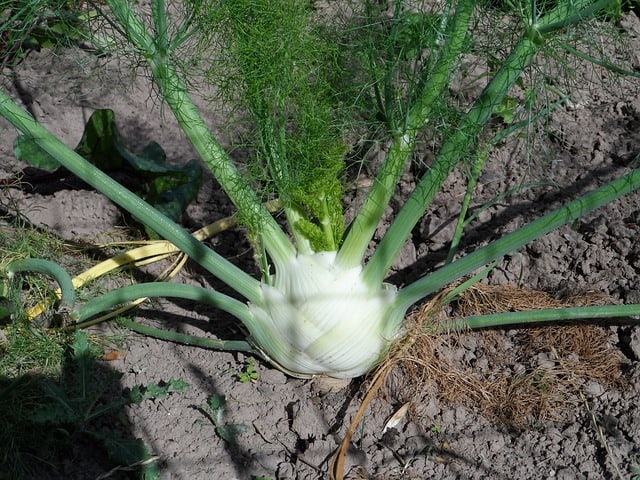
Fennel (Foeniculum vulgare) is an attractive herb but is a heavy feeder and can inhibit the growth of neighboring plants due to the compounds it releases, which may inhibit germination and growth in some plants, including broccoli. Fennel also competes for nutrients and moisture in the soil. Planting fennel in isolation rather than alongside broccoli is advisable to ensure each plant can grow without detrimental effects.
Sweet Corn
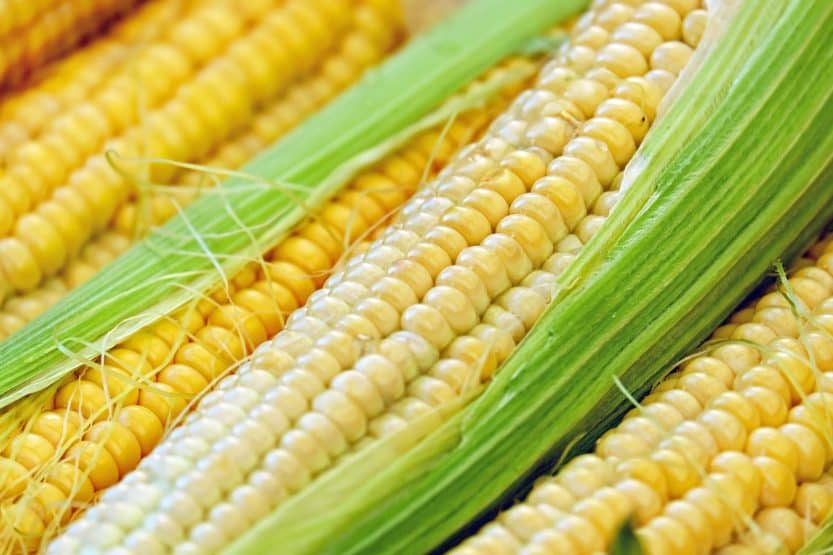
Sweet corn (Zea mays) is a tall, heavy feeder requiring significant amounts of nutrients and water, which can lead to competition with crops like broccoli. Furthermore, corn can cast shade over broccoli, depriving it of necessary sunlight. Optimal spacing is essential to avoid competition and maximize yield for both crops, which may be achieved by planting sweet corn in separate areas.
Pumpkin
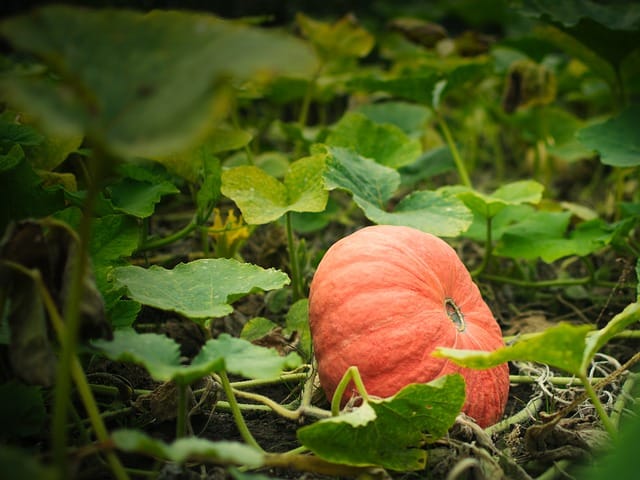
Pumpkin (Cucurbita pepo) is known for its sprawling growth pattern, which can consume substantial garden space. This aggressive nature combined with high nutrient requirements can detract from broccoli’s growth. Mindful planning and separate planting are key to ensuring that both crops thrive, as pumpkins absorb a considerable amount of resources and compete for both light and nutrients.
Watermelon
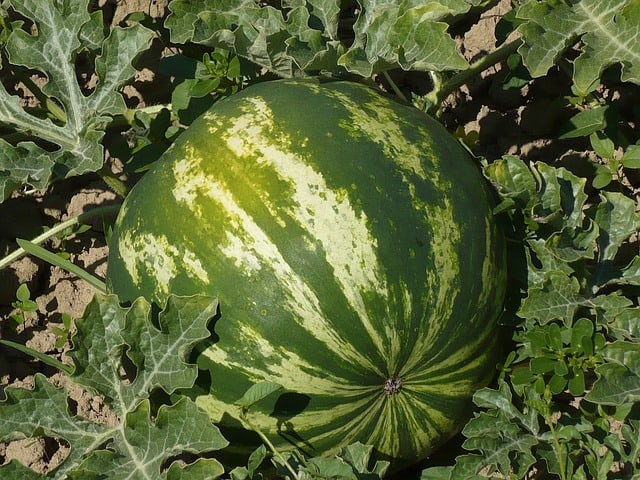
Similar to pumpkins, watermelon (Citrullus lanatus) is a sprawling, heavy-feeding plant. Its aggressive growth can lead to significant competition for space and nutrients with neighboring crops like broccoli. Watermelon’s size and growth habits can cast shade over broccoli plants, diminishing their sunlight exposure and overall growth potential. Therefore, maintaining proper spacing and avoiding interplanting is essential to support healthy growth for both crops.
Conclusion
Companion planting offers an enriching approach to gardening that can maximize the health and yield of your crops, particularly for a nutrient-rich vegetable like broccoli. By selecting the right companions, you can create an ecosystem that enhances growth, attracts beneficial insects, and effectively deters pests. Conversely, careful consideration of unsuitable companions allows for the management of competition and optimal cultivation conditions.


